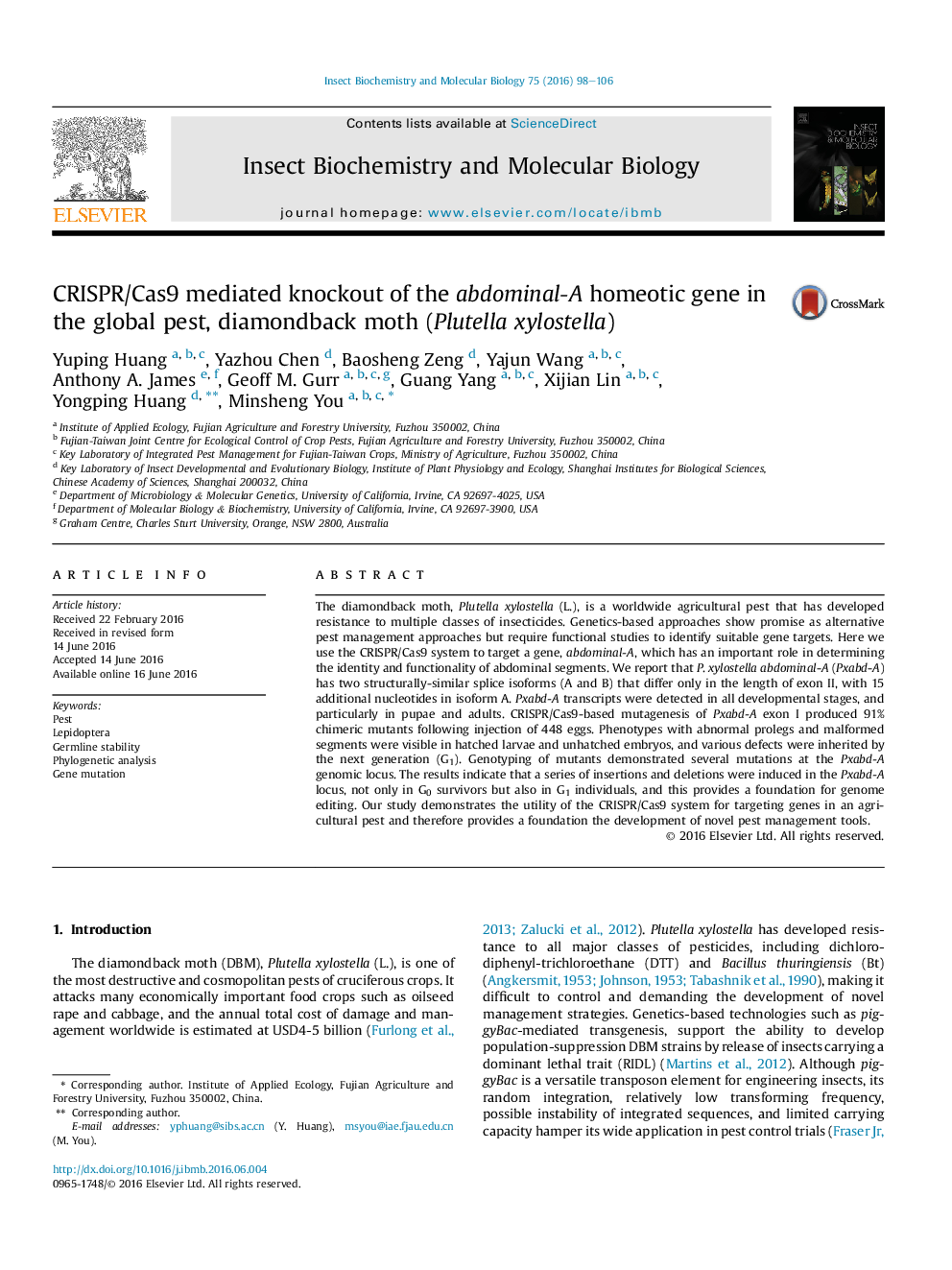| کد مقاله | کد نشریه | سال انتشار | مقاله انگلیسی | نسخه تمام متن |
|---|---|---|---|---|
| 1981940 | 1539477 | 2016 | 9 صفحه PDF | دانلود رایگان |

• Pxabd-A has two structurally-similar splice isoforms (A and B).
• Pxabd-A exhibited varying levels of expression during development.
• CRISPR/Cas9 mediates mutated phenotypes with malformed segments, prolegs and genitals that were inherited.
• CRISPR/Cas9 mediates germline mutagenesis of the Pxabd-A genomic locus.
The diamondback moth, Plutella xylostella (L.), is a worldwide agricultural pest that has developed resistance to multiple classes of insecticides. Genetics-based approaches show promise as alternative pest management approaches but require functional studies to identify suitable gene targets. Here we use the CRISPR/Cas9 system to target a gene, abdominal-A, which has an important role in determining the identity and functionality of abdominal segments. We report that P. xylostella abdominal-A (Pxabd-A) has two structurally-similar splice isoforms (A and B) that differ only in the length of exon II, with 15 additional nucleotides in isoform A. Pxabd-A transcripts were detected in all developmental stages, and particularly in pupae and adults. CRISPR/Cas9-based mutagenesis of Pxabd-A exon I produced 91% chimeric mutants following injection of 448 eggs. Phenotypes with abnormal prolegs and malformed segments were visible in hatched larvae and unhatched embryos, and various defects were inherited by the next generation (G1). Genotyping of mutants demonstrated several mutations at the Pxabd-A genomic locus. The results indicate that a series of insertions and deletions were induced in the Pxabd-A locus, not only in G0 survivors but also in G1 individuals, and this provides a foundation for genome editing. Our study demonstrates the utility of the CRISPR/Cas9 system for targeting genes in an agricultural pest and therefore provides a foundation the development of novel pest management tools.
Figure optionsDownload high-quality image (296 K)Download as PowerPoint slide
Journal: Insect Biochemistry and Molecular Biology - Volume 75, August 2016, Pages 98–106